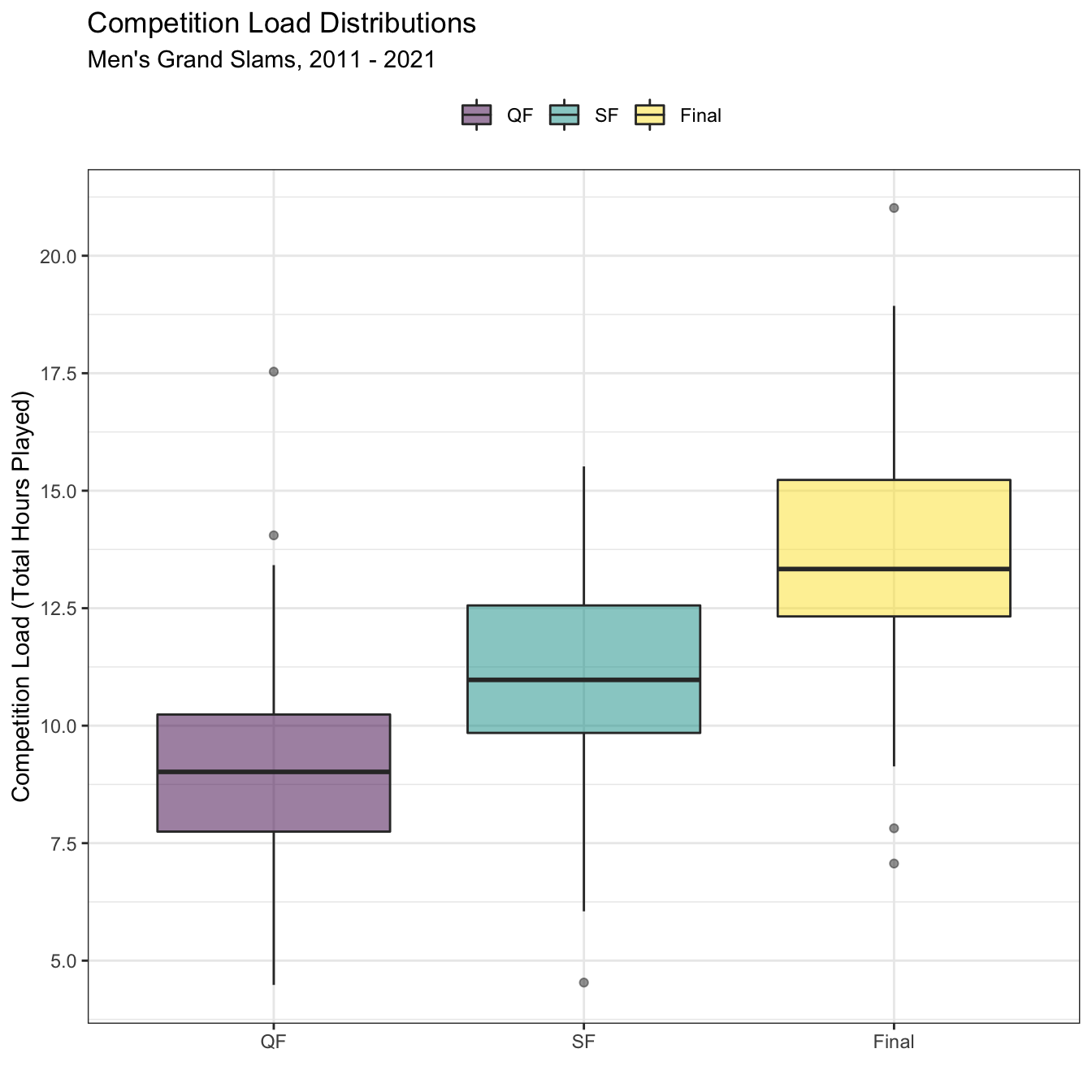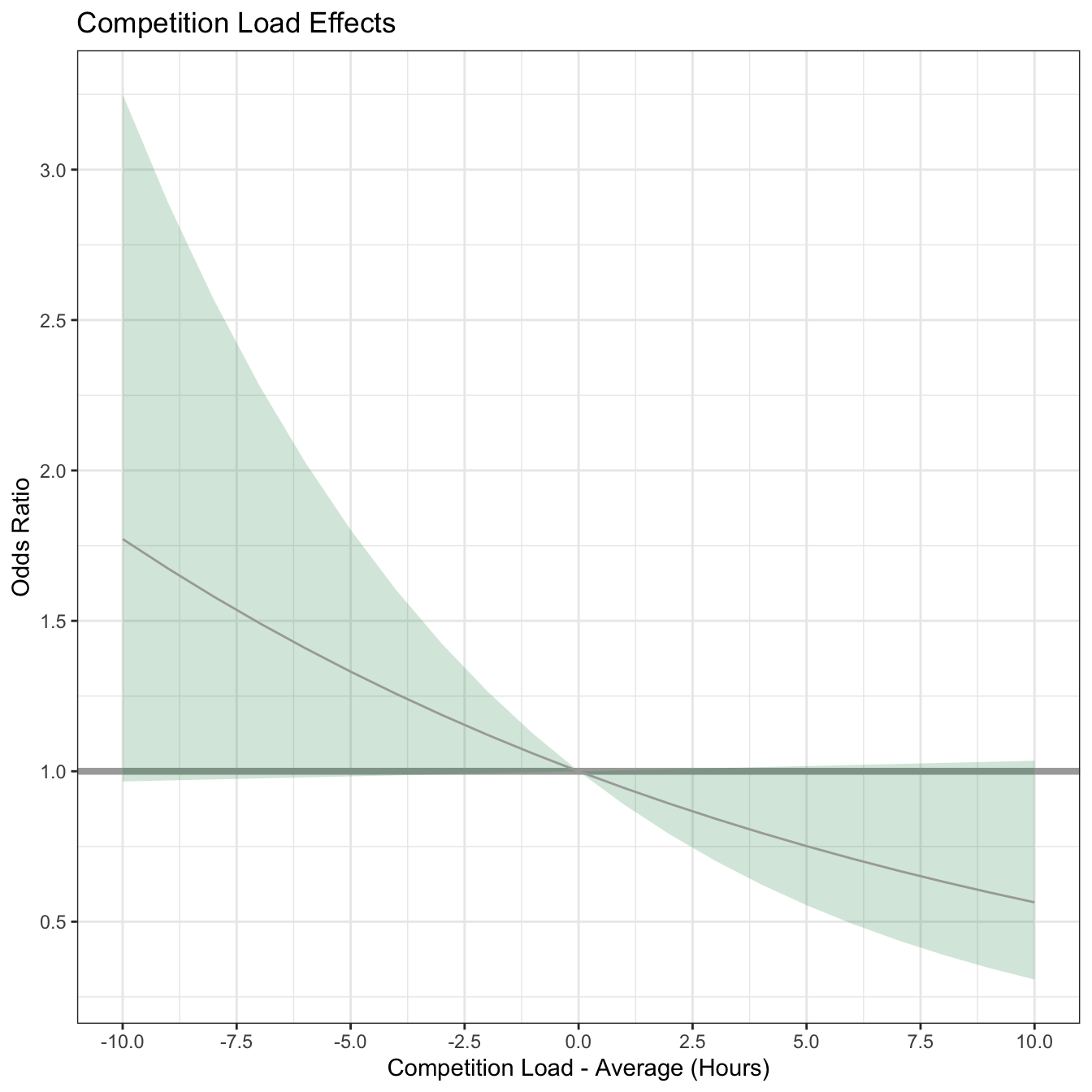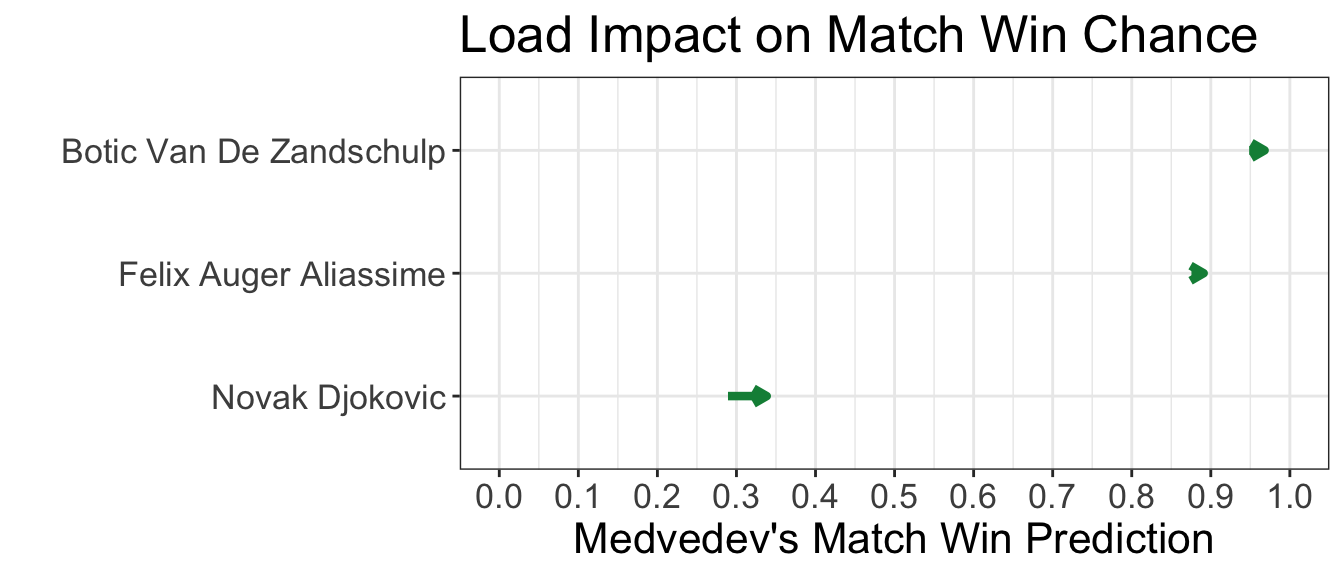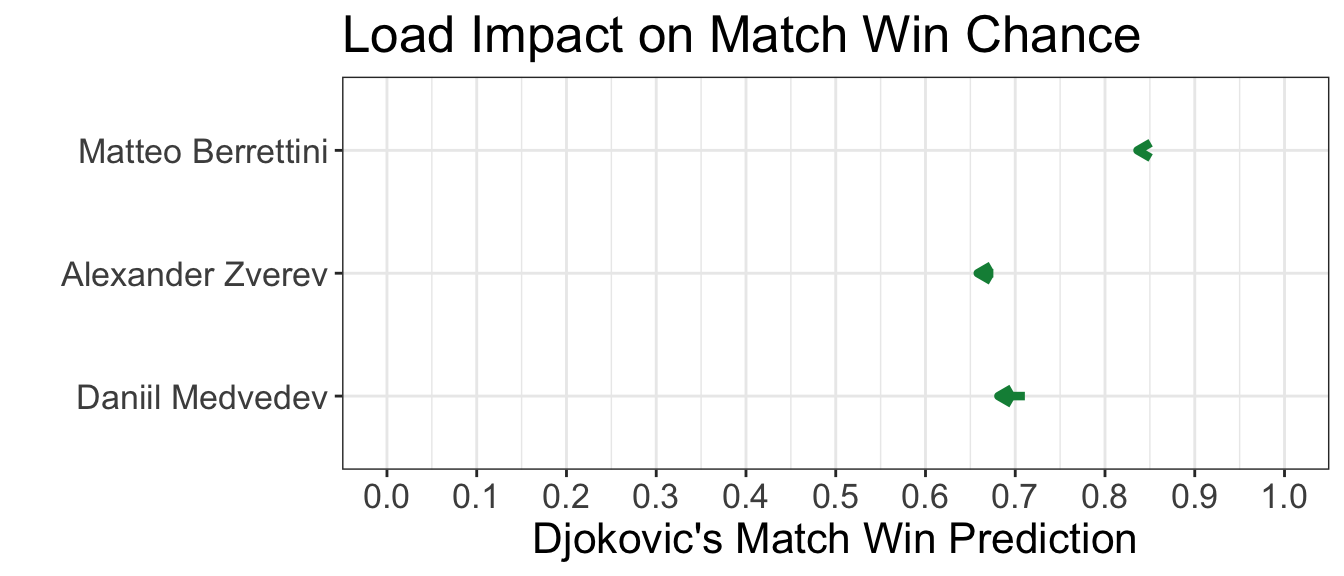Did Competition Load Help Make Medvedev a Grand Slam Champion?
Daniil Medvedev may not have gotten the result he wanted at his latest Major opportunity in Melbourne. But that doesn’t change the fact that he remains the most successful male player of his generation and the only non-Big-Four player among the current ATP top 10 to have a Grand Slam title. In this post, I look at the extent to which competition load played a role in getting Medvedev to what has so far been the milestone of his tennis career.
Load is an uber-loaded term in sport that is much used but has no consistent definition. Despite the lack of consensus about the best definition for load, the cumulative wear-and-tear it aims to capture is still an important and useful quantity to try to quantify.
In a previous post, I introduced a load measure for tennis, competition load, which is the in-event cumulative time on court. Time is a crude measure of load, as it doesn’t consider anything about the biomechanics of what is happening on court. Still, it has the advantage of being known for every pro match, which makes it possible to analyze it.
Typical and Atypical Competition Loads
What is a typical competition load at a Grand Slam? Considering men’s matches at the Majors between 2011 and 2021, and making no differentiation by surface, Figure 1 shows that the usual competition load by the quarterfinal is between 7.5 - 10 hours, by the semifinal 10 to 12.5 hours, and by the final 12.5 to 15 hours. Just the progression we would expect when the average men’s slam match is 2.5 hours in duration.

Load Effect on Match Wins
In my previous post, I used a regression analysis to show that increasing load appears to have a negative impact on match win probability, after adjusted for the pre-match win prediction based on both competitor’s Elo ratings. Using the same model and fitting to the more up-to-date 2011 to 2021 dataset, that association still holds. For every additional hour of competition load over the average load for a round, the past decade of match results at the slams suggest the odds of winning a match reduce by 5.6 percent with significance of 0.058.
Figure 2 shows the implications of the load effect for different load values. The load values are expressed in hours different from the round average, with the solid line the model estimate and the shaded region the 95% confidence interval around that estimate. The effect is expressed as an odds ratio, which is the factor we would multiply a player’s Elo-based odds to get the load-adjusted win prediction. So any odds ratio < 1 is having a negative impact on a player’s win chances.

You may be wondering whether the near linear assumption for load effects is right. After all, might it not be detrimental for a player to be too fresh? I was curious about this myself so I also looked at fitting the load effect as a cubic spline, where we can explore a variety of shapes (including a U shape) for the load effect curve. However, this showed that more complex relationships were not a significantly better description of the load influence. So we can conclude that less court time prior to a match is generally better for winning matches at Grand Slams.
2021 US Open
With Nadal’s title at the recent AO, we can now say that the 2021 US Open was Djokovic’s one chance to be the first to 21 Major titles. And most thought he was a shoe-in for that achievement. Yet, Medvedev not only quashed that historic possibility, he did so handily—not even giving Djokovic a set.
So how did he do it? A look at the load progression of Medvedev, Djokovic, and each of their second week opponents makes a compelling case for load playing some—and perhaps a key—role.
The table below shows the situation for Medvedev. First, facing the qualifier and surprise quarterfinalist Botic Van De Zandschulp meant he went up against a player with the highest competition load in the tournament, Van De Zandschulp having more than 5 hours more load by the quarterfinal in comparison to the slam average. The semifinal continued this trend with Felix Auger Aliassime who entered the SF with a load that was higher than 86% of Major semifinalists. Finally, Djokovic himself was under a massive amount of load, owing to several surprising struggles in the first week of the US Open. By match number seven, Novak had racked up 17.4 hours of match time, a load greater than 93% of men’s Grand Slam finalists over the past decade.
| Player | Round | Competition Load | Fraction of Players with Less Load | Result |
|---|---|---|---|---|
| Botic Van De Zandschulp | QF | 17.53 | 1.00 | 6-3 6-0 4-6 7-5 |
| Felix Auger Aliassime | SF | 13.53 | 0.86 | 6-4 7-5 6-2 |
| Novak Djokovic | Final | 17.43 | 0.93 | 6-4 6-4 6-4 |
Figure 3 shows the implications of these load histories for Medvedev’s win chances. Medvedev was the strong favorite for both the QF and SF, based on his talent alone. Yet, his wins in those rounds were a near certainty when we account for the load effect (see the prediction at the end of the arrow tip).

What about Novak? Looking at Novak’s second week opponents, we see that Berrettini was the only one who might have been struggling with any load effects heading into the match. Zverev and Medvedev were, on the other hand, comparatively fresh for an opponent in the semi- and final stages of a slam. In fact, each were among the 20% of slam competitors with the lowest load at their respective rounds. The impact of the different experience thru the draw had the biggest impact on the chances versus Medvedev, changing Novak’s expected win prediction from 71% to 68%.
Thus, the ‘load’ story that emerges is one where Medvedev got an effective boost in each of his second week matches, whereas the near opposite was the case for Djokovic. And, although a shift of a few percentage points in a win prediction might seem trivial, when the competition at the top of the game is as tight as it is in men’s tennis, these changes do matter.
| Player | Round | Competition Load | Fraction of Players with Less Load | Result |
|---|---|---|---|---|
| Matteo Berrettini | QF | 12.03 | 0.94 | 5-7 6-2 6-2 6-3 |
| Alexander Zverev | SF | 9.38 | 0.18 | 4-6 6-2 6-4 4-6 6-2 |
| Daniil Medvedev | Final | 11.85 | 0.16 | 6-4 6-4 6-4 |

What about the Australian Open final? By the finals, Nadal had accumulated 17 hours and 4 min, largely due to the 4 hour battle against Shapovalov that could have very probably ended Nadal’s run in the quarterfinals. Medvedev had a similarly tough journey to the final. Curiously enough, it was another top Canadian, Felix Auger Aliassime who gave him the most trouble in the quarters, in a match that lasted 4 hours and 42 minutes. By the final, Medvedev was at whopping 17 hours and 29 minutes of competition load.
In the case of the AO final, the high load Nadal and Medvedev went into the final with would suggest that neither was especially favored or disadvantaged in this regard. And it adds more context to the equally physical toll both players displayed. It is another reminder of how much even a slight edge can make the difference at the top of the men’s game.

